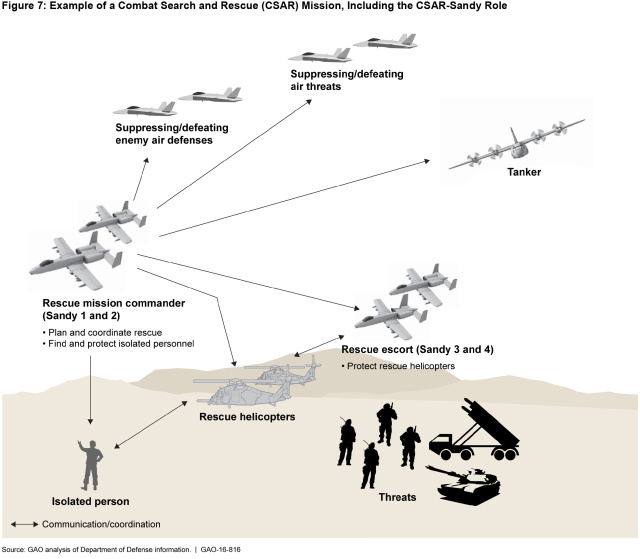What’s in the Air Force A-10’s Future?
 (Excerpted from GAO-16-816)
(Excerpted from GAO-16-816)
Given these alternatives, and facing a lower-than-expected budget level, the Air Force argued that retiring the A-10 to prioritize modern aircraft—though not optimal—was the best option. In the Air Force’s view, an earlier-than-planned A-10 retirement was the best way to cut costs, and the least risky.
However, A-10 proponents have argued that it is the most effective and least expensive aircraft for the job. Moreover, the A-10 capabilities stand out in bad weather, when enemy forces are close or moving, and when targets are armored, according to Air Force and other officials familiar with the A-10. In addition, A-10 pilots are considered the Air Force’s close air support experts due to the amount and depth of their training in this mission, which significantly exceeds that of other Air Force pilots. Current uses of the A-10 DOD also uses the A-10 for more than just close air support missions. For example, Air Force analysis indicates that the A-10 is the best Air Force aircraft for countering swarming boats. Further, the A-10 is currently the only DOD aircraft assigned to the “Sandy” role in Combat Search and Rescue (CSAR) missions. When personnel are trapped behind enemy lines, CSAR-Sandy qualified pilots- coordinate and lead the rescue mission,
- escort the rescue helicopters, and
- suppress enemy forces during the mission.
 (Excerpted from GAO-16-816)
(Excerpted from GAO-16-816)
- Questions on the content of this post? Contact John Pendleton at PendletonJ@gao.gov.
- Comments on GAO’s WatchBlog? Contact blog@gao.gov.

GAO's mission is to provide Congress with fact-based, nonpartisan information that can help improve federal government performance and ensure accountability for the benefit of the American people. GAO launched its WatchBlog in January, 2014, as part of its continuing effort to reach its audiences—Congress and the American people—where they are currently looking for information.
The blog format allows GAO to provide a little more context about its work than it can offer on its other social media platforms. Posts will tie GAO work to current events and the news; show how GAO’s work is affecting agencies or legislation; highlight reports, testimonies, and issue areas where GAO does work; and provide information about GAO itself, among other things.
Please send any feedback on GAO's WatchBlog to blog@gao.gov.
